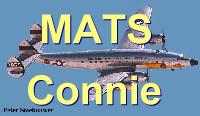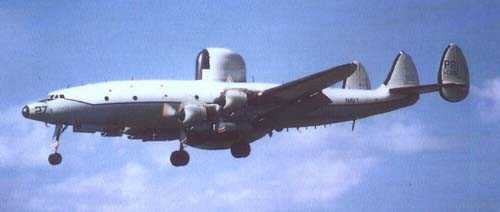 |
The first Lockheed Warning Star was developed for he US Navy as PO-1W.
It derived from the famous Constellation, modified to allow the installatin
of electronic surveillance equipment. The AEW capabilities of the aircraft were
succesfully tested during various NATO exercises, thus it entered service in
1955 as Navy WV-2. 244 aircraft were ordered by the US Navy. 82 aircraft was
also ordered as EC-121, 10 of which form USAF and 72 from US Navy.
|
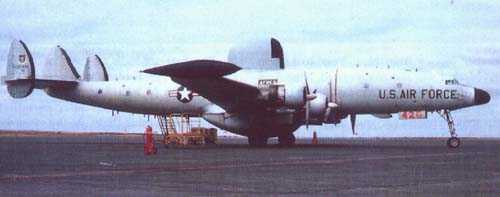
|
This
aircraft lasted until 1978, it was the first AWACS unit; it was used for fleet
protection, and to increase the Distant Early Warning capabilities. It supported
the Apollo Space program, it was used as a testbed for experimental radar and
electronic warfare equipments, including the installation of a rotodome, later
used on Sentry and Hawkeye.
|

|
The
EC-121 was widely employed in the VietNam war, dating from 1965, making history
when it guided a US fighter over the Tonkin Gulf against a vietnamese MiG
21, the first experiment of a fighter controlled and guided by an airborne
platform, that paved the way for the future AWACS systems.
|
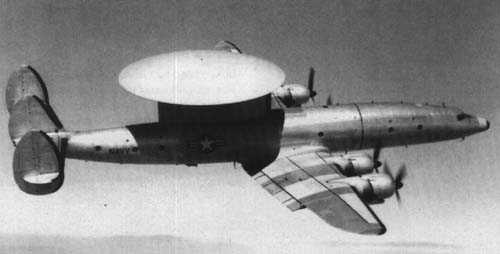
|
On July 28, 1970, two EC-121 Lockheed "Super Constellations" from the
193d
Tactical Electronic Warfare Squadron took off from Olmsted State Airport,
Harrisburg, Pennsylvania. United States forces were engaged in Vietnam, and
the EC-121s were headed for Korat in Thailand, where the USAF was operating
from a Royal
Thai Air Force base. In addition to 252 aircrews and technicians, an additional
75 officers and airmen supported Commando Buzz by flying materiel and personnel
from Olmsted to Southeast Asia and back.
The
Pennsylvania Air Guard's EC-121s were laden with electronic equipment, and their
mission was to act as flying radar stations and airborne control platforms.
They possessed search and identification radar, interception equipment, and
a battery of communications gear. The range of the EC-121s extended over all
of North Vietnam and the Gulf of Tonkin, and they were a key element in Seventh
Air Force control of tactical air operations.
|
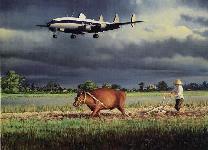
|
The final group of Air Guardsmen rotated during the Thanksgiving and Christmas
holidays of 1970, and early in January 1971, the mission was completed. Within
three days after the return of the 193d to Pennsylvania the Commander-in-Chief,
Pacific Air Forces sent a message to the Chairman of the Joint Chiefs of Staff,
commending the dedication and professionalism demonstrated by the exceptional
mission performance of the 193d
|








